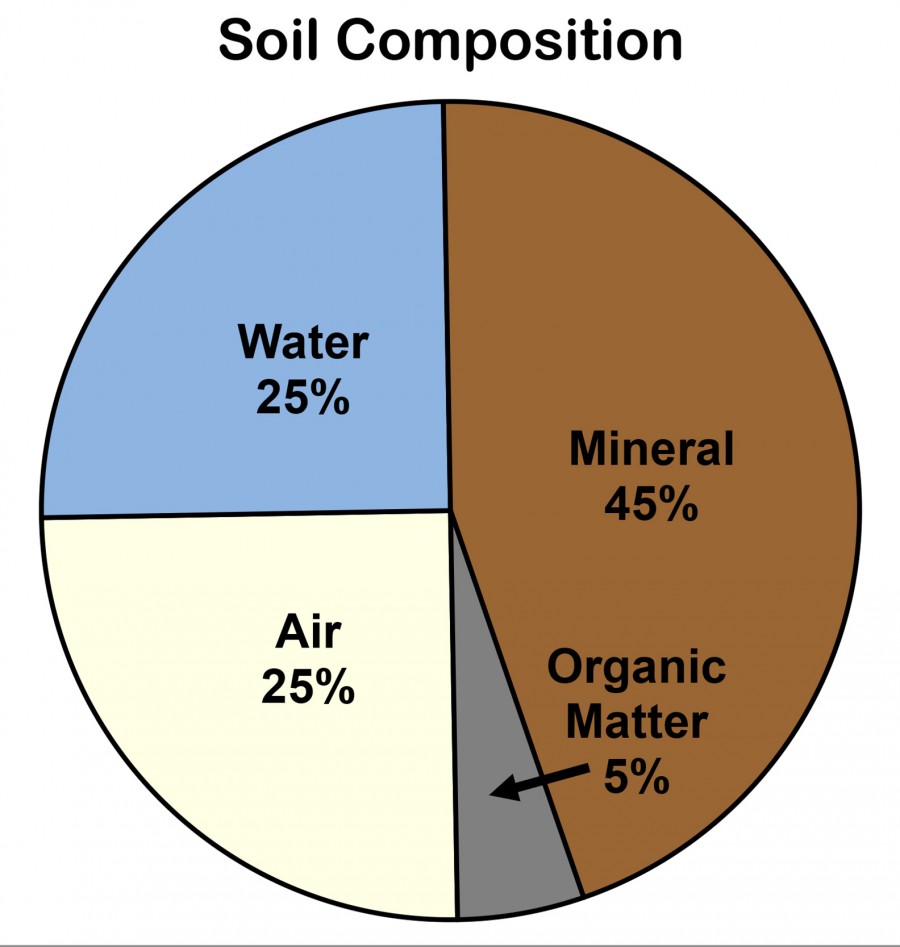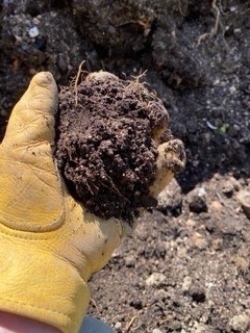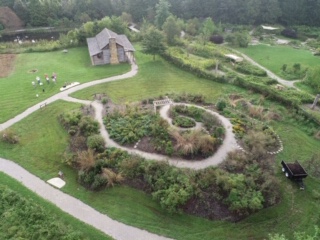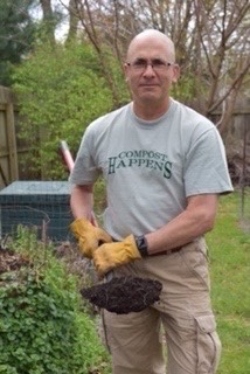Blog
Want Biodiversity? Feed the Soil
by Jason Neumann, Public Programs Manager
It’s time to vent. After nearly 25 years on staff at Cincinnati Nature Center, there are a couple of things I want to clear up. For the record, I’m fully on board with the Nature Center’s “Plant Native” campaign and the practices that help us share our spaces with wildlife and encourage local biodiversity. I’ll take you “deeper” in a moment—let’s attend to those items that are like a finger in the eye every time I hear them.

Soil is not “Dirt”
I’ve had enough soil science classes and grown enough food that I simply can’t let this one go. The term “dirt” suggests something worthless. “Dirt” might be considered soil that’s out of place, like mud on your pants or dust on the floor. Dirt is dead.
Soil, on the other hand, is a blend of air, water, minerals, and living or dead plants and animals and their decaying parts. Soil is more than a medium for plants—soil is like a jungle filled with life. A single teaspoon of rich garden soil can hold up to a billion bacteria, yards of fungal filaments, thousands of protozoa, and scores of nematodes.
Soil is ever-changing—we’ll return to that concept shortly.

Compost is not Soil
This is number 2 on my list. I’m delighted to see people check out the three-bin composting system outside the Rowe Visitor Center. It’s quite common to overhear folks say “...and then it turns into soil.” Compost by itself is not soil, it’s organic matter—the once-living and living material in the soil.
Phew…now that all that’s off my chest, some application.
Going Deeper
Next to recycling, composting is low hanging fruit on the tree of environmental practices. Considering that 31.7% of household waste in Hamilton County is compostable, there’s a lot of material at hand. Through managed decomposition of once-living things, we can make use of something that will be thrown away.
In my own yard, I compost anything I can get my hands on: weeds, paperboard take out bowls, fruit peels, paper towels, eggshells, old plant stems, dead flowers, bits of sticks, grass clippings, leaves, hair, coffee grounds. I end up making tons of compost every year—by “ton” I don’t mean “a lot”, I mean 2,000 pounds (compost weighs between 1,000 – 1,600 lbs per cubic yard).

So Where is All This Going?
In the greater Cincinnati area, most of us have heavy clay soils to contend with. On top that, if you’re gardening around your house, we also have to contend with damaged soil—during construction the soil was treated, well, like dirt. The natural layers of soil were churned up and probably compacted during construction. Even the soil around my 1958 house still has issues.
However, native plants can handle our clay soils. In May 2016, the plants in the Pollinator Garden at the Nature Center were installed directly into a mound of soil removed from the PlayScape when it was constructed – it was essentially churned up heavy clay. Those native plants did just fine.
The cool part is native plants can help to slowly improve the soil. Take big bluestem grass as an example. We only see the top 1/3 of the plant—the other 2/3, the roots, are underground. About 1/3 of those roots die each year, adding organic matter to the soil and opening up pores so water can percolate into the soil.
And get this—many native plants have roots that go 10-15 feet down into the soil. The plants slowly break up the clay.

What You Can Do
To improve your soil, feed your microbial life! All those microbes eat dead stuff so feed them. The more kinds of organic matter, the more diverse the microbial life (each group takes care of a small part of the decomposition process). Many microbes make a sort of microbial glue that helps clumps and pores to form. In soil science parlance, the microbes are creating soil structure.
Spread organic mulches (mulches originating from plants) over the soil surface of your soil—they begin to decay almost as soon as applied. Purchased wood chip mulch, tree leaves (my garden devours leaves – even thick mats of leaves are digested by mid-summer), straw, plant stems, etc. all work. If possible maintain a constant infusion of organic matter.
Try to keep all your organic material on your property if you can. Plant stems from spring cut back (I use them as mulch around my pawpaw trees), all those autumn leaves (used as mulch around berry bushes), deadfall and pruned sticks (great for brush piles), and grass clipping can all be used to feed the life in the soil.
Finally—avoid tilling if you can. Tilling breaks up soil structure. (Note: tilling is a useful tool for breaking up compacted soil and working quickly working in organic matter.)
As mentioned earlier, the soil is ever-changing. I challenge you to get your gloves “dirty” and work to improve your soil by feeding the biodiversity in the soil.